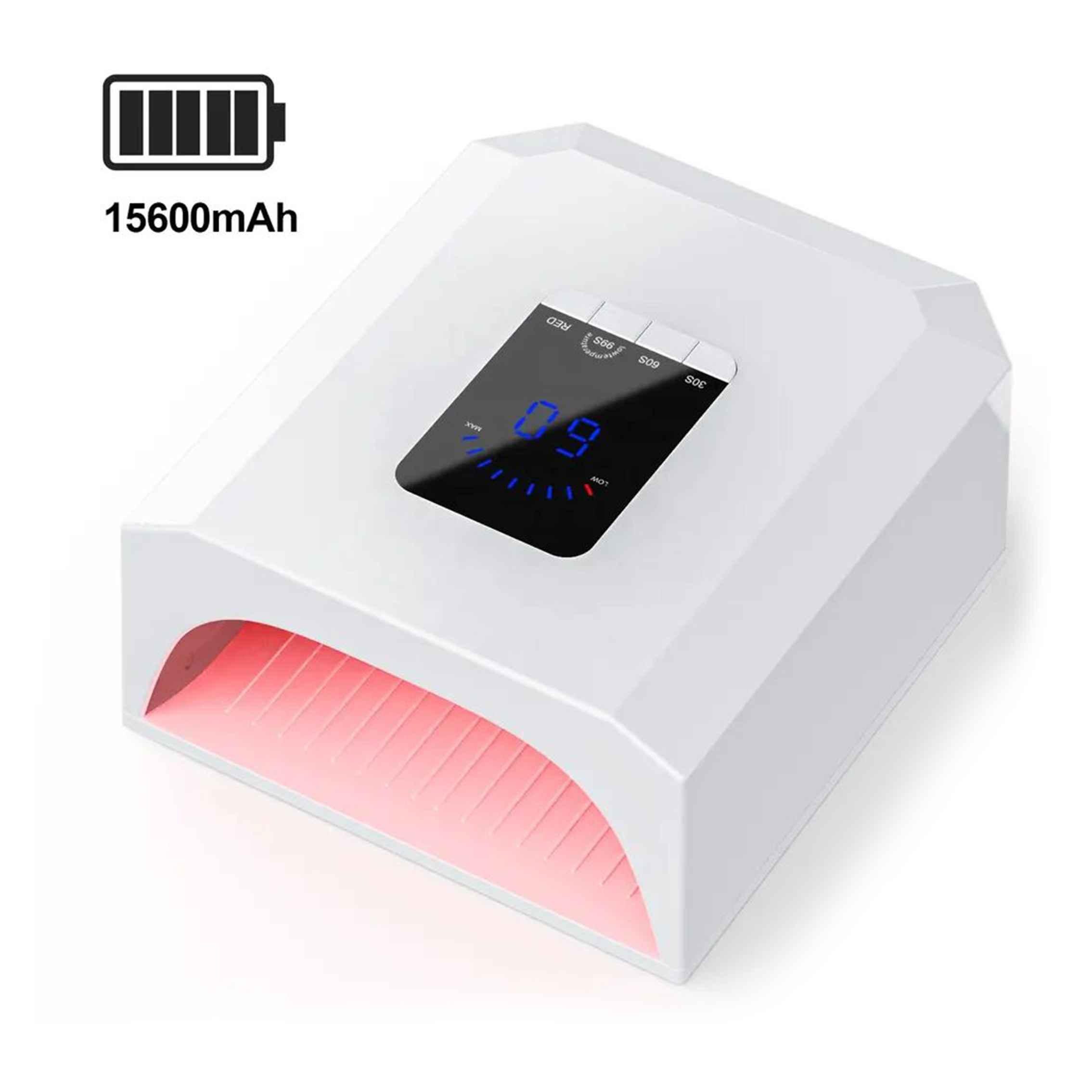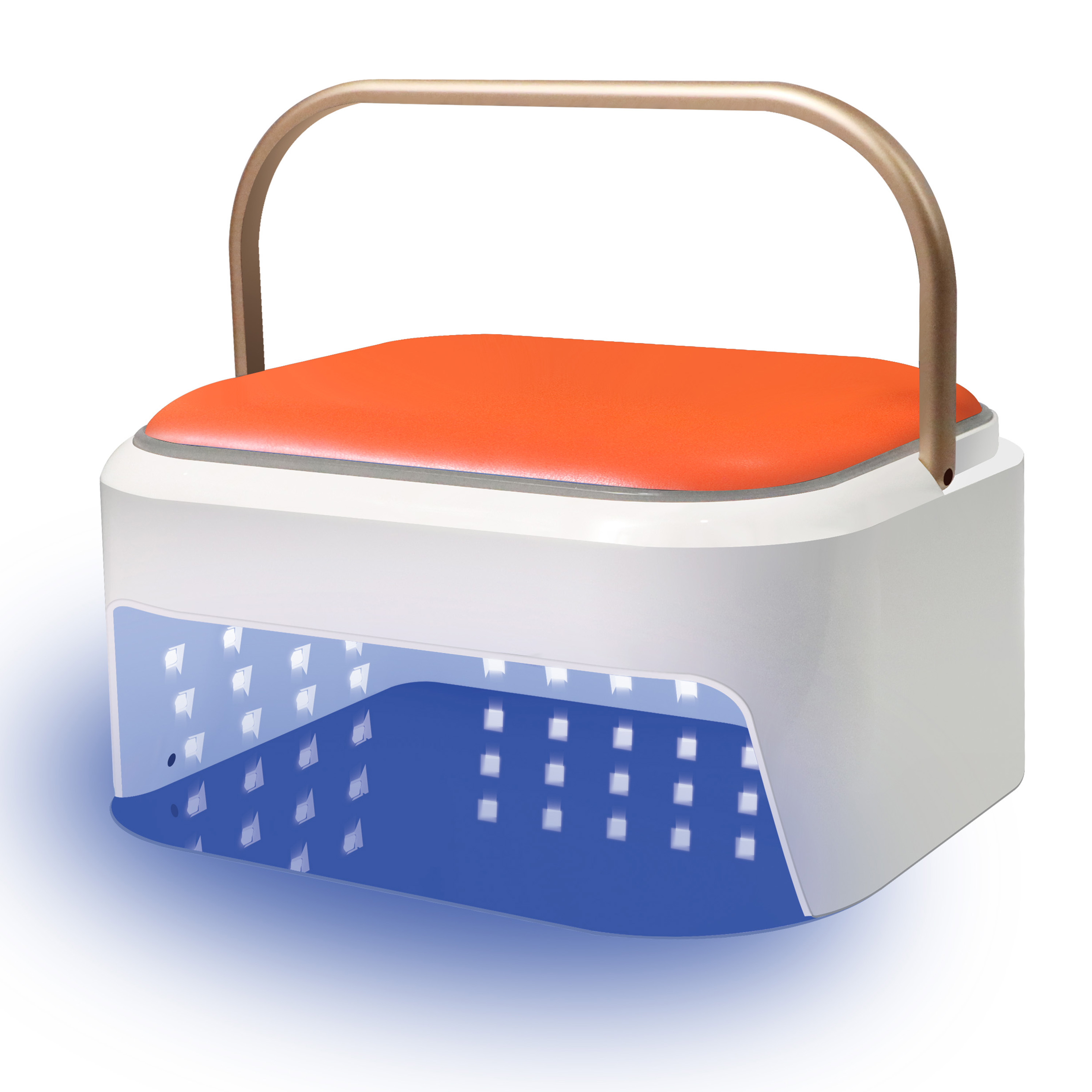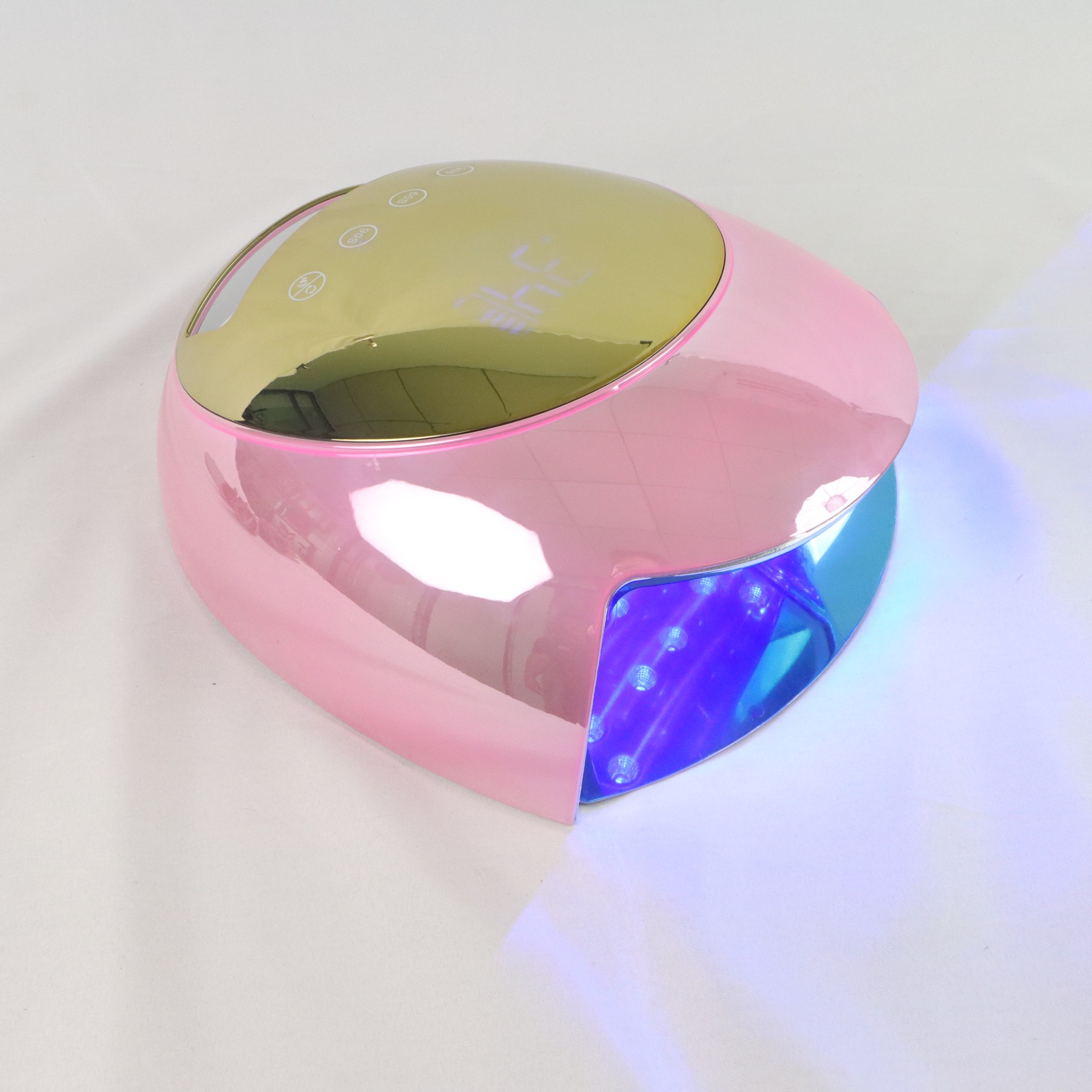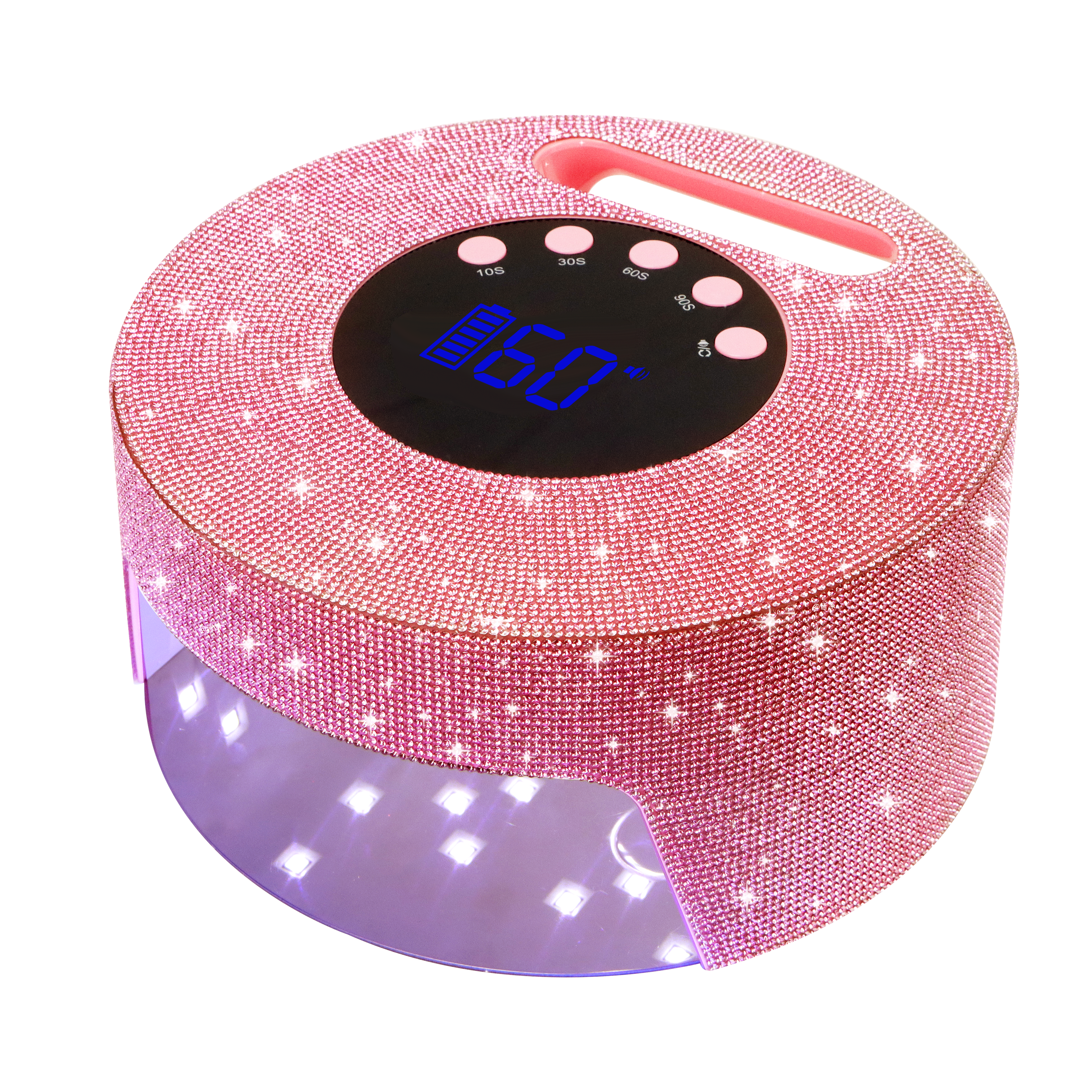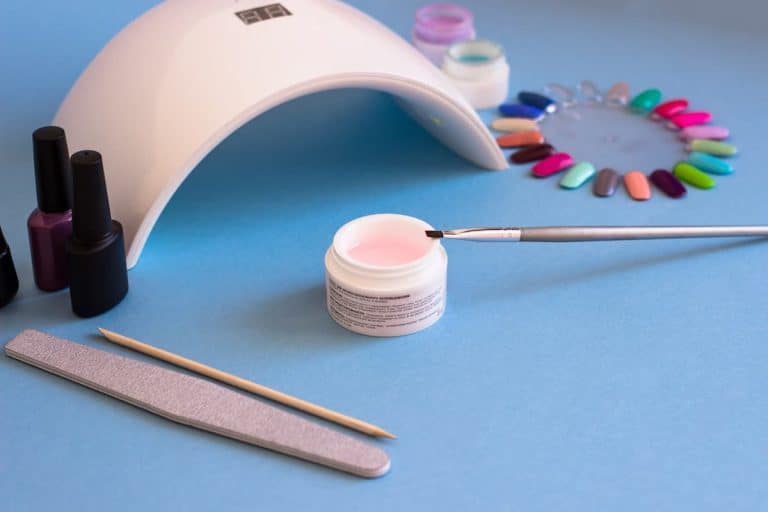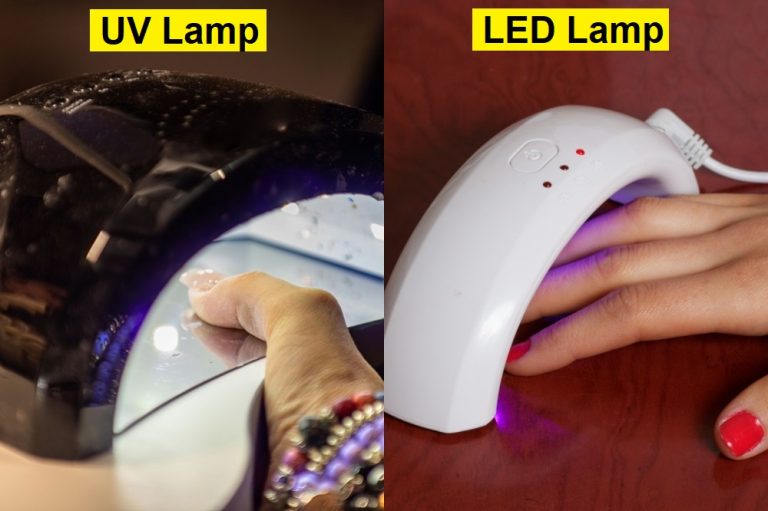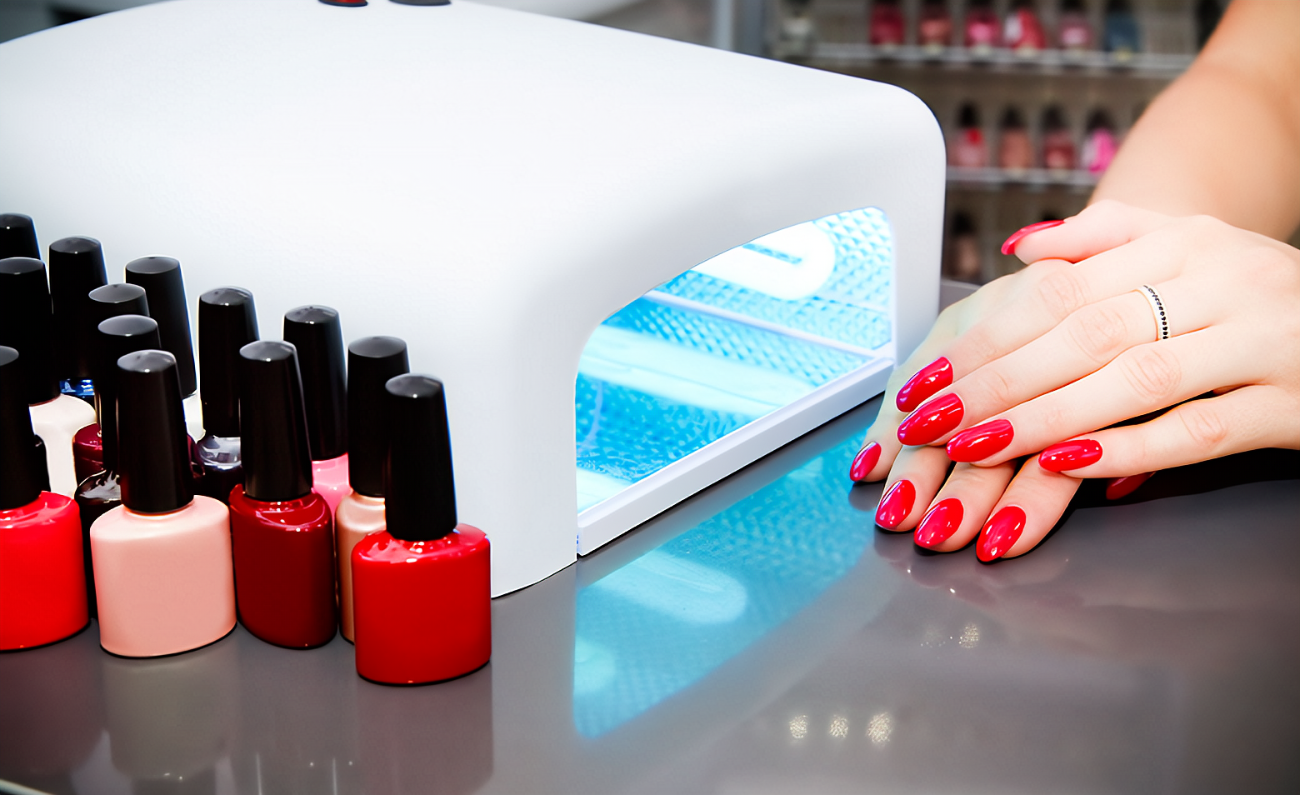Welcome to the comprehensive guide on LED nail lamps, where we address the burning question among nail enthusiasts: Are LED nail lamps safe? As the popularity of gel manicures continues to rise, it’s essential to understand the safety aspects associated with the tools we use. In this guide, we delve into the workings of LED nail lamps, explore their advantages, discuss potential safety concerns, and provide expert tips for safe usage. Whether you’re a professional nail technician or a DIY enthusiast, this article aims to equip you with the knowledge needed to make informed decisions and enjoy beautiful nails without compromising safety. Let’s dive in!
Understanding the Working Principles of LED Nail Lamps
LED nail lamps have gained significant popularity in the nail industry, but understanding their working principles is crucial to assessing their safety. Let’s take a closer look at the construction and illumination mechanism of LED nail lamps, as well as their comparison with traditional ultraviolet (UV) lamps.
LED Nail Lamp Construction and Illumination Mechanism
LED nail lamps consist of several key components that contribute to their functionality. The lamp typically comprises a base, which houses the electrical circuitry, a control panel for adjusting settings, and a LED light source.
The LED (Light Emitting Diode) light source is the heart of the nail lamp. It produces specific wavelengths of light, typically in the range of 365 to 405 nanometers (nm), known as the UV-A spectrum. These LEDs emit a narrow band of light, unlike traditional UV lamps that emit a broader spectrum of UV light.
Comparison with Traditional UV Lamps
LED nail lamps differ from traditional UV lamps in several aspects. While both types cure gel polish through polymerization, there are notable differences in their operation.
One significant distinction lies in the emission of light wavelengths. LED lamps primarily emit UV-A light, which is responsible for curing gel polish. In contrast, UV lamps emit a broader spectrum of UV light that includes UV-B and UV-C wavelengths. UV-B and UV-C light have shorter wavelengths and are known to have more potential for harmful effects on the skin and eyes.
Additionally, LED nail lamps offer faster curing times compared to UV lamps. The concentrated emission of specific wavelengths enables efficient curing, resulting in reduced drying time for gel polish.
Understanding the construction and illumination mechanism of LED nail lamps, as well as their comparison with traditional UV lamps, is crucial in evaluating their safety and effectiveness. In the following sections, we will explore the advantages and potential safety concerns associated with LED nail lamps to provide a comprehensive guide for nail enthusiasts.
Advantages of Using LED Nail Lamps
LED nail lamps offer several advantages that make them a popular choice among nail professionals and enthusiasts. Let’s explore these advantages in detail:
Fast Drying Time for Nails
One of the key advantages of LED nail lamps is their ability to provide rapid drying times for nail enhancements. LED lamps emit intense and focused light, allowing gel polish to cure quickly. Compared to traditional UV lamps, which may require several minutes for proper curing, LED lamps can cure gel polish in as little as 30 seconds per layer. This time-saving feature is highly beneficial for both salon professionals and clients, allowing for faster and more efficient nail services.
Low Energy Consumption and Long Lifespan
LED nail lamps are energy-efficient, consuming significantly less power compared to traditional UV lamps. The LEDs used in these lamps require minimal energy to generate the required light wavelengths. This energy efficiency not only reduces electricity costs but also contributes to environmental sustainability.
Furthermore, LED lamps have an impressive lifespan, often lasting for thousands of hours of usage. Their durability ensures longevity, eliminating the need for frequent replacements and reducing overall maintenance costs for nail technicians and salon owners.
Stable Light Source and Color Selection
LED nail lamps provide a stable and consistent light source throughout the curing process. The emitted light remains constant, ensuring consistent curing results for gel polish applications. This stability eliminates any concerns about inconsistent or patchy curing.
Moreover, LED lamps offer a wide range of color options. The light emitted by LEDs can be customized to produce specific wavelengths, allowing nail technicians and clients to choose from an extensive palette of colors for their nail enhancements. This versatility in color selection enhances creativity and satisfies the diverse preferences of nail enthusiasts.
By understanding the advantages of LED nail lamps, such as their fast drying time, low energy consumption, long lifespan, stable light source, and color selection, nail professionals and enthusiasts can make informed decisions regarding their usage. In the next sections, we will delve into potential safety considerations and address any concerns surrounding the use of LED nail lamps.
Potential Safety Concerns and Considerations
While LED nail lamps offer various advantages, it is essential to address potential safety concerns and alleviate any associated worries. Let’s explore two key areas of concern:
Relationship Between Ultraviolet Radiation and Skin Health Risks
One common concern regarding LED nail lamps is the exposure to ultraviolet (UV) radiation and its potential impact on skin health. UV radiation is known to be associated with various skin-related risks, including premature aging, sunburn, and an increased risk of skin cancer.
However, it’s important to note that the level of UV radiation emitted by LED nail lamps is significantly lower compared to natural sunlight and traditional UV lamps. LED lamps primarily emit UV-A light, which has longer wavelengths and is considered less harmful to the skin. The exposure time during nail curing sessions is relatively short, further reducing the potential risk.
Nonetheless, it is advisable to adopt precautionary measures such as applying broad-spectrum sunscreen to the hands or wearing UV-protective gloves during nail services to provide an extra layer of protection against UV exposure.
Choosing LED Lamps with Low Radiation
To address safety concerns, manufacturers have developed LED nail lamps with low radiation output. These lamps are specifically designed to emit minimal UV radiation while still ensuring effective curing of gel polish. Choosing LED lamps that are labeled or certified as low-radiation or UV-safe can provide reassurance to nail technicians and clients.
When selecting LED nail lamps, it is crucial to consider the manufacturer’s specifications and certifications. Look for lamps that comply with relevant safety standards and regulations, as well as those that undergo rigorous testing and quality control measures. Opting for reputable brands and seeking guidance from trusted suppliers can help ensure the safety and reliability of the LED nail lamps used in professional nail salons and home settings.
By addressing concerns related to UV radiation and offering low-radiation LED lamp options, the nail industry strives to prioritize the safety and well-being of both nail technicians and clients. In the subsequent sections, we will discuss best practices for safe usage of LED nail lamps, providing further guidance on maintaining a safe and enjoyable nail care experience.
Effective Management of Ultraviolet Exposure Risks
To ensure the safe use of LED nail lamps, it’s crucial to implement effective measures for managing potential risks associated with ultraviolet (UV) exposure. Here are two key strategies for minimizing UV exposure:
Reducing Ultraviolet Exposure Time
One practical approach to managing UV exposure is by minimizing the duration of exposure during nail curing sessions. Since LED nail lamps provide efficient curing, it is often possible to reduce the exposure time compared to traditional UV lamps.
Nail technicians can adopt techniques such as layering thin coats of gel polish and ensuring proper application to facilitate faster and more effective curing. By avoiding excessive layer thickness and optimizing application techniques, the overall exposure time to UV light can be reduced while achieving desired results.
Additionally, clients can communicate their preferences to nail technicians regarding the desired thickness of gel polish layers. This open dialogue allows technicians to tailor the application process, optimizing UV exposure and ensuring client comfort without compromising the quality of the manicure.
Using Protective Measures such as Eyewear or Sunscreen
Another way to mitigate UV exposure risks is by implementing protective measures during nail services. Nail technicians and clients can both benefit from utilizing protective eyewear specifically designed for UV protection.
Protective eyewear shields the eyes from potential UV radiation emitted during the nail curing process. By wearing UV-blocking goggles or glasses, both technicians and clients can safeguard their eyes against any potential harm associated with UV exposure.
Furthermore, applying broad-spectrum sunscreen to the hands and exposed skin can provide an additional layer of protection. The sunscreen should offer sufficient UV-A and UV-B protection, and it is advisable to select a water-resistant formula for long-lasting coverage.
By reducing UV exposure time and utilizing protective measures such as eyewear and sunscreen, nail technicians and clients can effectively manage and minimize the potential risks associated with UV radiation. In the next sections, we will delve into the importance of selecting high-quality LED nail lamps and explore the latest research findings and expert opinions on LED nail lamp safety.
Product Quality and Certification of LED Nail Lamps
Ensuring the quality and safety of LED nail lamps is paramount for nail professionals and enthusiasts. Here are two crucial aspects to consider when evaluating LED nail lamp products:
Choosing Certified and Safe Products
When selecting LED nail lamps, it is advisable to choose products that have undergone certification and testing processes to ensure their safety and compliance with industry standards. Look for certifications such as CE (Conformité Européene), RoHS (Restriction of Hazardous Substances), or UL (Underwriters Laboratories) markings.
Certifications demonstrate that the LED nail lamps have met specific safety requirements and have been tested for electrical safety, radiation output, and other relevant factors. Such certifications instill confidence in the product’s quality and reliability, providing peace of mind for both nail technicians and clients.
Additionally, reputable manufacturers often provide detailed information about their certifications, either on their websites or product packaging. Take the time to research and verify the authenticity of the certifications claimed by the manufacturer to ensure you are investing in a safe and reliable LED nail lamp.
Understanding Relevant Certification Standards and Organizations
To make informed decisions about LED nail lamps, it is helpful to familiarize yourself with relevant certification standards and the organizations responsible for setting these standards. Understanding the requirements and guidelines can assist in evaluating product quality and safety.
Some widely recognized certification standards for electrical safety and product quality include the International Electrotechnical Commission (IEC) standards and the American National Standards Institute (ANSI) standards. These standards encompass various aspects such as electrical safety, performance, and reliability.
Additionally, organizations such as the National Association of Safety and Health in Nail Technology (NASN) and the Professional Beauty Association (PBA) provide resources and guidelines for the nail industry. Staying updated with the latest industry standards and recommendations from these organizations can help ensure the safe and effective use of LED nail lamps.
By selecting certified and safe products and understanding relevant certification standards and organizations, nail professionals and enthusiasts can prioritize quality, safety, and compliance when it comes to LED nail lamps. In the subsequent sections, we will explore the latest research findings and expert opinions regarding the safety of LED nail lamps, further enhancing your understanding of this topic.
Research Findings and Expert Opinions
Staying informed about recent research findings and expert opinions on the safety of LED nail lamps is crucial for nail professionals and enthusiasts. Let’s explore the conclusions drawn from recent studies and summarize expert opinions in this area:
Conclusions from Recent Research on the Safety of LED Nail Lamps
Numerous studies have been conducted to assess the safety of LED nail lamps, specifically focusing on the potential risks associated with UV radiation exposure. Overall, the research suggests that LED nail lamps, when used as directed, pose minimal risks to the skin and overall health. Here are some key conclusions:
- The UV-A radiation emitted by LED nail lamps is significantly lower compared to natural sunlight and traditional UV lamps.
- The exposure time during typical nail curing sessions is relatively short, further reducing the potential risk of adverse effects.
- The risk of skin damage or skin cancer due to LED nail lamp usage is considered low, especially when compared to other sources of UV radiation.
It is important to note that individual sensitivity to UV radiation may vary. Some individuals may have a higher sensitivity or preexisting conditions that could increase their susceptibility to UV damage. In such cases, taking additional precautions, such as using UV-protective gloves or sunscreen, is recommended.
Expert Opinions and Recommendations
Experts in the field of nail care generally agree that LED nail lamps are safe for use when proper guidelines and safety precautions are followed. Here are some expert opinions and recommendations:
- Nail technicians should ensure that they adhere to manufacturer instructions for LED nail lamp usage and employ best practices in their nail services.
- Clients should communicate any concerns or sensitivities to their nail technicians to facilitate a personalized and safe experience.
- Experts emphasize the importance of UV protection for the eyes and suggest using UV-blocking goggles or glasses during nail services to minimize the risk of eye irritation.
Experts also advocate for continuous research and development in the nail industry to further enhance the safety and effectiveness of LED nail lamps. By staying updated with the latest research findings and expert opinions, nail professionals and enthusiasts can make informed decisions and confidently enjoy the benefits of LED nail lamp technology.
In the following sections, we will explore best practices for safe usage of LED nail lamps and provide comprehensive guidelines to ensure a safe and enjoyable nail care experience.
Best Practices for Safe Usage of LED Nail Lamps
To ensure the safe and optimal use of LED nail lamps, it is essential to follow best practices and guidelines. Here are two key practices to consider:
Following Manufacturer’s Usage Instructions
Manufacturers provide detailed instructions for the safe and effective usage of their LED nail lamps. It is crucial to carefully read and follow these instructions to maximize safety and achieve optimal results. Here are some guidelines typically included in the manufacturer’s usage instructions:
- Recommended curing times: Pay attention to the recommended curing times for different types of gel polish. Avoid overexposure to UV light by adhering to the specified duration.
- Proper hand positioning: Follow the recommended hand positioning within the lamp during the curing process. Ensuring that the hands are correctly positioned helps to optimize the exposure and minimize any potential risks.
- Safety precautions: Manufacturers may provide additional safety precautions, such as avoiding direct eye contact with the LED light or not touching the LED bulbs directly. Adhere to these precautions to minimize potential risks.
By following the manufacturer’s instructions, you can ensure the safe and effective use of LED nail lamps while maximizing the benefits they offer.
Regular Inspection and Maintenance of the Lamp
Regularly inspecting and maintaining the LED nail lamp is crucial for its optimal performance and safety. Consider the following practices:
- Cleaning: Keep the lamp clean by following the manufacturer’s cleaning instructions. Regularly remove any dust, debris, or residue that may accumulate on the lamp’s surface or inside the lamp.
- Bulb replacement: LED bulbs have a long lifespan, but they will eventually wear out over time. Replace the bulbs according to the manufacturer’s recommended schedule or if they appear dim or flickering.
- Electrical safety: Periodically check the power cord and plug for any signs of damage. Ensure that the electrical connections are secure and that the lamp operates with a stable power source.
By conducting regular inspections and maintenance, you can identify and address any potential issues promptly, ensuring the continued safety and functionality of the LED nail lamp.
Adhering to the manufacturer’s usage instructions and regularly inspecting and maintaining the LED nail lamp are essential best practices for safe usage. In the next sections, we will address safety considerations for specific user groups and provide guidelines for evaluating personal reactions to LED nail lamps.
Safety Considerations for Different User Groups
LED nail lamp usage requires specific safety considerations for different user groups. Let’s explore the safety guidelines and recommendations for two specific user groups:
Safety Precautions for Pregnant Women and Children
When it comes to pregnant women and children using LED nail lamps, it is important to exercise caution and consider their unique needs. Here are some safety considerations to keep in mind:
- Consultation with a healthcare professional: Pregnant women should consult with their healthcare provider before using LED nail lamps or any other nail enhancement products. Their healthcare provider can offer personalized guidance based on their specific situation.
- Minimizing exposure time: Pregnant women and children may choose to minimize their exposure to UV light. Consider reducing the number of layers or opting for faster-curing gel products to minimize the overall exposure time.
- Well-ventilated environment: Ensure that the salon or space where the LED nail lamp is being used is well-ventilated. Good airflow can help disperse any fumes or odors that may be associated with nail products.
It is always advisable for pregnant women and parents to consult with their healthcare providers or pediatricians for personalized advice and recommendations regarding the usage of LED nail lamps for themselves and their children.
Safety Recommendations for Individuals with Allergies or Sensitive Skin
Individuals with allergies or sensitive skin should take certain precautions when using LED nail lamps. Here are some safety recommendations to consider:
- Patch test: Before fully exposing the skin to UV light during a complete nail curing session, individuals with allergies or sensitive skin may choose to conduct a patch test. Apply a small amount of the gel polish to a small area of the skin and cure it under the LED nail lamp as directed. Monitor the skin’s reaction for at least 24 hours to ensure there are no adverse effects.
- Use skin barrier products: Individuals with sensitive skin can apply a skin barrier product, such as petroleum jelly or a protective base coat, to create a physical barrier between the gel polish and the skin. This can help minimize potential direct contact and reduce the risk of skin irritation.
- Opt for hypoallergenic products: Consider using gel polishes that are specifically formulated for sensitive skin or labeled as hypoallergenic. These products are designed to minimize the risk of allergic reactions and are less likely to cause skin irritation.
By taking these safety considerations into account, pregnant women, children, and individuals with allergies or sensitive skin can enjoy the benefits of LED nail lamps while minimizing potential risks. In the subsequent sections, we will explore how to evaluate personal reactions to LED nail lamps and discuss the conclusion and importance of safe usage.
Conclusion: Enjoying Nail Care with LED Nail Lamps in a Safe Manner
In conclusion, it is possible to enjoy the benefits of nail care with LED nail lamps while prioritizing safety. Let’s summarize the discussion on the safety of LED nail lamps and emphasize the importance of using them correctly and managing risks effectively.
Summarizing the Safety of LED Nail Lamps
Based on research findings and expert opinions, LED nail lamps, when used as directed, are considered safe for nail professionals and enthusiasts. The UV-A radiation emitted by LED lamps is significantly lower compared to natural sunlight and traditional UV lamps, and the exposure time during nail curing sessions is relatively short. While individual sensitivity to UV radiation may vary, the overall risk of skin damage or skin cancer due to LED nail lamp usage is considered low.
It is crucial to select certified and safe LED nail lamps that comply with relevant safety standards and regulations. By adhering to the manufacturer’s usage instructions and following best practices, such as minimizing exposure time and using protective measures, the potential risks associated with LED nail lamps can be effectively managed.
Emphasizing the Importance of Proper Usage and Risk Management
To ensure a safe nail care experience with LED nail lamps, it is essential to use them correctly and implement effective risk management. This includes:
- Following manufacturer’s instructions: Adhere to the usage instructions provided by the manufacturer. This includes recommended curing times, proper hand positioning, and any additional safety precautions.
- Regularly evaluating personal reactions: Pay attention to any adverse reactions or allergies that may occur during or after using LED nail lamps. If any concerns arise, consult with a healthcare professional or dermatologist for appropriate advice.
- Managing exposure and risks: Minimize UV exposure time by optimizing gel polish application techniques and layer thickness. Use protective measures such as UV-blocking eyewear or sunscreen to reduce the potential risks associated with UV radiation.
By emphasizing the importance of proper usage and risk management, nail professionals and enthusiasts can confidently enjoy the benefits of LED nail lamps while ensuring their safety.
In conclusion, LED nail lamps provide efficient and convenient nail curing solutions. By following the recommended guidelines, using certified products, and implementing safety measures, individuals can enjoy beautiful and long-lasting manicures with LED nail lamps in a safe and responsible manner.
This concludes the comprehensive guide on the safety of LED nail lamps. By sharing this knowledge, iksbeauty aims to empower nail professionals and enthusiasts to make informed decisions and prioritize safety while delivering exceptional nail care services.

